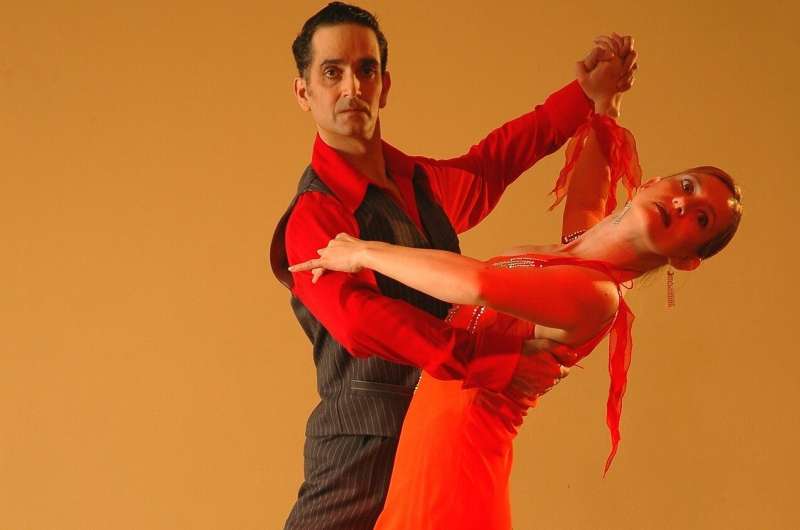

Dance is at the heart of Latin culture, celebrated for its social, historical and cultural significance. And new research suggests that older Latinos who regularly participate in it can help their brains stay healthy, too.
Latinos age 55 and over who participated in a culturally relevant Latin dance program for eight months significantly improved their working memory compared with peers in the control group who attended health education workshops, according to the study’s lead author, Susan Aguiñaga, a professor of kinesiology and community health at the University of Illinois Urbana-Champaign.
Working memory—the ability to temporarily keep a small amount of information in mind while performing other cognitive tasks—is integral to planning, organizing and decision-making in everyday life.
The dance program used in the study, Balance and Activity in Latinos, Addressing Mobility in Older Adults—or BAILAMOS—showed promise at enticing older Latinos to become more physically active and help stave off age-related cognitive decline, Aguiñaga said.
“Dance can be cognitively challenging,” Aguiñaga said. “When you’re learning new steps, you have to learn how to combine them into sequences. And as the lessons progress over time, you must recall the steps you learned in a previous class to add on additional movements.”
BAILAMOS was co-created by study co-author David X. Marquez, a professor of kinesiology and nutrition, and the director of the Exercise and Psychology Lab at the University of Illinois Chicago; and Miguel Mendez, the creator and owner of the Dance Academy for Salsa.
BAILAMOS incorporates four types of Latin dance styles: merengue, salsa, bachata and cha cha cha, said Aguiñaga, who has worked with the program since its inception when she was a graduate student at the U. of I. Chicago.
“It’s an appealing type of physical modality,” she said. “Older Latinos are drawn to Latin dance because most of them grew up with it in some way.”
Latin dance can evoke positive emotions that prompt listeners to participate, increasing levels of physical activity in a population that tends to be sedentary, according to the study, published in the journal Frontiers in Aging Neuroscience.
More than 330 Spanish-speaking Latino adults who were middle-aged or older were recruited for the study, primarily through community outreach in local churches. Participants were randomly assigned to either the dance group or the control group, which met once a week for two-hour health education classes that covered topics such as nutrition, diabetes and stress reduction.
Participants in the BAILAMOS groups met twice weekly for the dance sessions, taught by a professional instructor for the first four months and later by a “program champion”—an outstanding participant in each group who displayed enthusiasm and leadership qualities. The programs champions were selected and trained by the instructor to lead the sessions during the four-month maintenance phase.
Over the different waves of the four-year study, the dance lessons were held at 12 different locations across Chicago, such as neighborhood senior centers and churches that were familiar and easily accessible to participants, Aguiñaga said.
Participants’ working memory—along with their episodic memory and executive function—was assessed with a set of seven neuropsychological tests before the intervention began, when it concluded after four months and again at the end of the maintenance phase.
Participants also completed questionnaires that assessed the number of minutes per week they engaged in light, moderate and vigorous physical activity through tasks associated with their employment, leisure activities, household maintenance and other activities.
On average, participants were about 65 years old with body mass indices that placed them in the obese category. About 85% of the study participants were female.
As with a small pilot study of BAILAMOS conducted previously, the current study found no differences in any of the cognitive measures between the dance participants and their counterparts in the health education group at four months. However, after eight months, people in the dance group performed significantly better on tests that assessed their working memory.
“That’s probably one of the most important findings—we saw cognitive changes after eight months, where participants themselves had been leading the dance classes during the maintenance phase,” Aguiñaga said. “All of our previous studies were three or four months long. The take-home message here is we need longer programs to show effects.
Source: Read Full Article